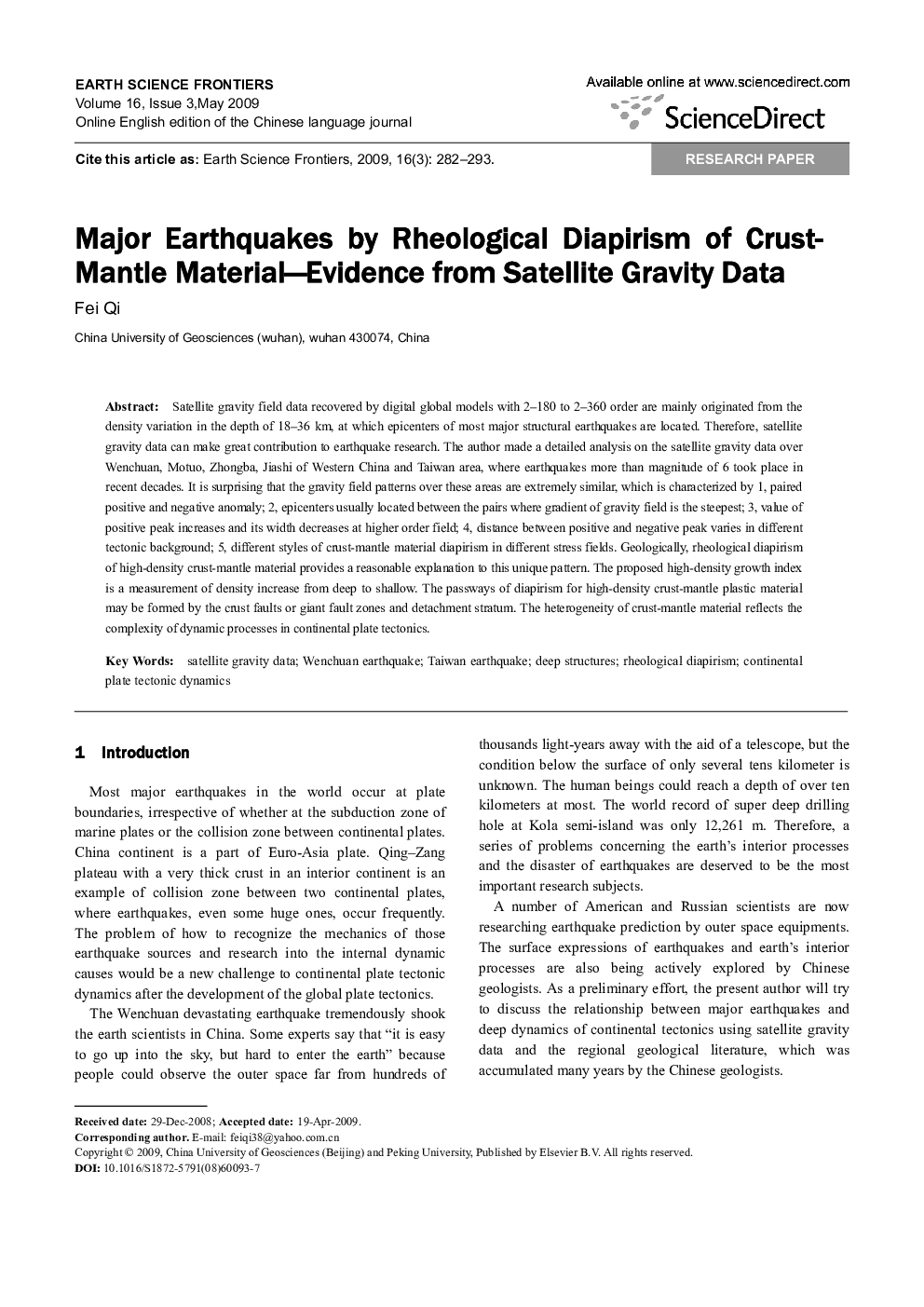| Article ID | Journal | Published Year | Pages | File Type |
|---|---|---|---|---|
| 4701520 | Earth Science Frontiers | 2009 | 12 Pages |
Satellite gravity field data recovered by digital global models with 2–180 to 2–360 order are mainly originated from the density variation in the depth of 18–36 km, at which epicenters of most major structural earthquakes are located. Therefore, satellite gravity data can make great contribution to earthquake research. The author made a detailed analysis on the satellite gravity data over Wenchuan, Motuo, Zhongba, Jiashi of Western China and Taiwan area, where earthquakes more than magnitude of 6 took place in recent decades. It is surprising that the gravity field patterns over these areas are extremely similar, which is characterized by 1, paired positive and negative anomaly; 2, epicenters usually located between the pairs where gradient of gravity field is the steepest; 3, value of positive peak increases and its width decreases at higher order field; 4, distance between positive and negative peak varies in different tectonic background; 5, different styles of crust-mantle material diapirism in different stress fields. Geologically, rheological diapirism of high-density crust-mantle material provides a reasonable explanation to this unique pattern. The proposed high-density growth index is a measurement of density increase from deep to shallow. The passways of diapirism for high-density crust-mantle plastic material may be formed by the crust faults or giant fault zones and detachment stratum. The heterogeneity of crust-mantle material reflects the complexity of dynamic processes in continental plate tectonics.
